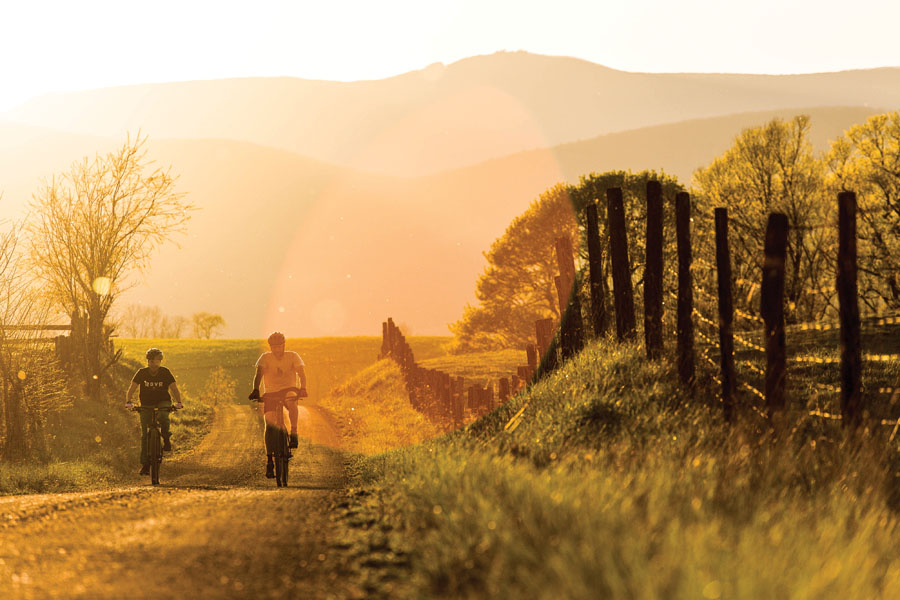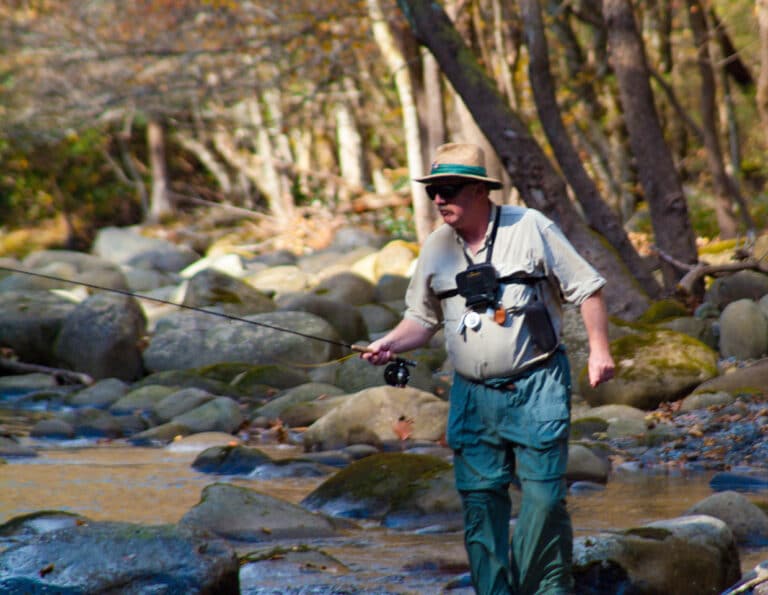Have you ever discovered a band before it hit the big time? It can be a conflicting find. Should you tell all and spread the word, or tuck the artist away in the recesses of your playlist, your own little secret? Stumbling upon the next Asheville is kinda the same. Lucky for you, we’re not in the business of keeping secrets. Steer away from the throngs of tourists this summer and discover the adventure in these four mountain towns. With thriving art scenes, backdoor adventures, and nightlife culture to boot, the only thing missing here is you. What are you waiting for?
Staunton, Virginia
Population: 24,350
Cradled by the Blue Ridge Mountains to the east and the Allegheny Mountains to the west, the city of Staunton is a literal crossroads of adventure. Its downtown district is quaint and quiet with rolling hills that seamlessly fade to farmland in a matter of miles, which makes it even more surprising that the city is just minutes from the I-81/I-64 interchange.
It’s precisely that proximity to low-traffic, country roads that attracted Black Dog Bikes owner James Burris to settle in Staunton back in 2004. At the time, says Burris, Staunton was mostly known for its art scene and historical attractions like the American Shakespeare Center’s Blackfriars Playhouse and the Frontier Culture Museum of Virginia. While the city’s rich history in both arenas had certainly provided a solid foundation, Burris saw potential elsewhere—namely, a lot of cyclists and no bike shop.
“I stayed because it was easy to get into the mountains,” says Burris. “It’s funny that places like Asheville are known for their outdoor recreation because when you go there, you sit in traffic. You’re in a city. In Staunton, we’re close to the Blue Ridge Parkway, Skyline Drive, Shenandoah National Park and the George Washington and Jefferson National Forest, but it’s totally a small town.”
Now, Burris’ bike shop is at the heart of Staunton’s outdoor community. Group road rides leave from the shop every Tuesday and Thursday at 6pm, and a women’s only ride meets at Queen City Brewing Company on Wednesdays. Each ride brings out 15 cyclists or more, and with bike-specific events like the Lee Warren Queen City Century and the Shenandoah Fall Foliage Bike Festival bringing in out-of-town cyclists from near and far, the momentum only continues to grow.
Play: Road biking outside of Staunton is a lot like how we imagine touring around Europe’s countryside would be—sprawling farmscapes nestled against a backdrop of rolling blue ridgelines. Short of a few farm trucks and Sunday drivers, you’ll mostly have the roads to yourself. Check out shenandoahbike.org for some suggested routes in the area. Mountain bikers can get a quick singletrack fix at Montgomery Hall Park before embarking on another adventure like hiking to Elliot Knob, the highest point in Augusta County, or fishing for rainbow and brown trout on the Maury River. Cap off the evening with late night jams at Byers Street Bistro or free jazz performances every Thursday night from July through August at Gypsy Hill Park.
Stay: Downtown Staunton is loaded with bed and breakfasts like the Frederick House (rates starting at $140 per night) and The Bard’s Nest ($145 per night). Visitors can find more rustic accommodations at the Staunton/Walnut Hills KOA (rates starting at $22 per night) or the Shenandoah Valley Campground (rates starting at $36 per night). Camping on Elliot Knob’s grassy summit is highly recommended and has the most affordable rate around town—free.
Eat: Start the day off right with a cup of coffee from Blue Mountain Coffees. For a casual lunch, head over to Cranberry’s Grocery and Eatery, where you can even stock up on all of your health foods and products. Newtown Baking is another laidback lunch spot, and from Wednesday thru Saturday the bakery opens for dinner hours and serves up some savory wood-fired pizzas (order the #1, just do it). For a multicourse meal with a remarkably chill vibe, make a reservation at The Shack, where Chef Ian Boden is cranking out some incredible locally sourced and inspired dishes. Visiting craft beer and wine lovers will not be disappointed in Staunton. The city alone has six craft breweries and six vineyards within a 30-mile radius of town.
Johnstown, Pennsylvania
Population: 24,402
Back in the late 1800s, Johnstown was a hub of activity. As the country’s leading producer of steel, the city helped lay the way for westward expansion. The majority of steel rails that constituted the country’s first railroad tracks were forged right in Johnstown (the first railroad tunnel, Staple Bend Tunnel, still stands just four miles outside of town).
Now, of course, only steel mills and outbuildings remain from the city’s industry legacy. But thanks to a new collaborative initiative called LIFT Johnstown, the city is working to harness that storied past and weave it with the threads of a more progressive future, one that embraces the arts, entrepreneurship, and of course, outdoor recreation.
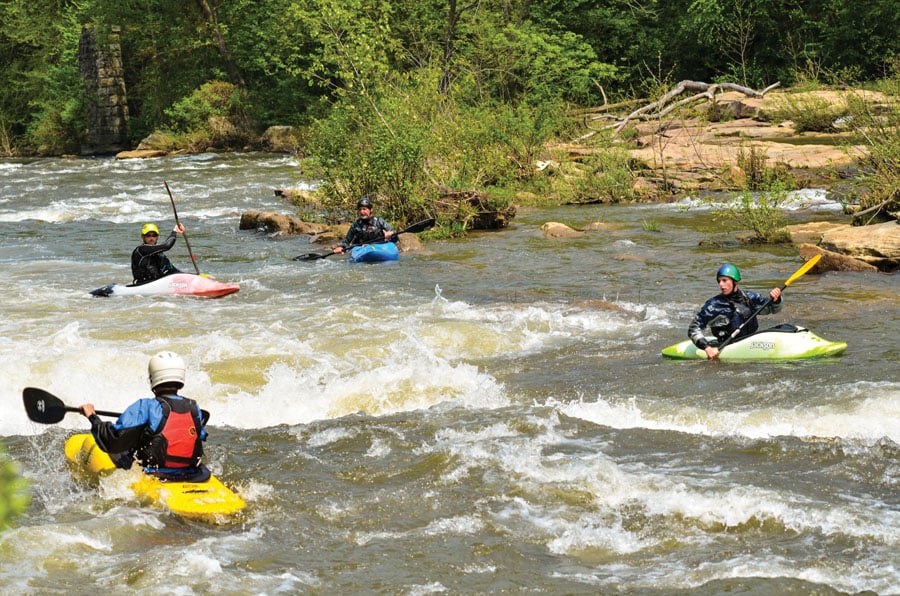
“There are a number of things I love about Johnstown,” says Johnstown native and LIFT Johnstown coordinator Brad Clemenson. “It’s a small enough city that we joke about rush minute instead of rush hour. The cost of living is very reasonable, the cultural and arts organizations and music venues are fun, but the thing I like most about it is all of the outdoor recreation and beauty that surrounds us. If you go out of Johnstown in any direction, you are going to go through or over some pretty big mountains.”
Engulfed by the Laurel Highlands to the west and the Allegheny Mountains to the east, Johnstown is undoubtedly a “mountain” town. Look at any aerial image of the city and you’ll see a vibrant downtown (recognized as a national historic district) fronted on all sides by lush green mountains and bisected by the Conemaugh River.
Historically, the largest tourist turnout to Johnstown is Thunder in the Valley, an annual motorcycle rally that brings thousands of riders into town. But in the spring, the city is flooded with enthusiasts of a different sort—whitewater paddlers. The annual Stonycreek Rendezvous, organized by the Benscreek Canoe Club, celebrates the whitewater releases on the Stonycreek River, a fabulous class III run that flows into the Conemaugh. With an in-town play park and more than 90 miles of class II+ whitewater within a 30-minute driving distance of town, paddlers are no stranger to Johnstown, and you shouldn’t be either.
Play: History buff? You’ve come to the right place. Take a quick ride along the Staple Bend Tunnel Trail to see the country’s first railroad tunnel. Along the way you’ll see remnants of the Allegheny Portage Railroad, central Pennsylvania’s first mountain-traversing railroad. Step up the pedaling on any number of mountain bike trails located within a 45-minute drive of Johnstown. The intermediate-advanced rider hungry for technical rock gardens and gorgeous western Pennsylvania ridgetop riding should check out Forbes State Forest. While certainly not easy, the road riding around Johnstown is also exceptional, and out-of-towners should take a look at the routes available on the Laurel Highlands On & Off Road Bicycling Association, or LHORBA’s, website at lhorba.org. Paddlers can go to benscreekcanoeclub.com to see a listing of the 2017 Quemahoning scheduled whitewater releases for the Stonycreek. Though the bulk of the paddling season is in the spring, wet fall weather can keep the reservoir levels high enough for continued releases well into October.
Stay: For reservoir-side camping, head to the Quemahoning Family Recreation Area. Rates are an affordable $15 per night for tent sites, though campers can rent out cabins and RV sites for $10-20 more. The Meadowbrook School Bed & Breakfast is a nice alternative to car camping and at $85 per night (cash or check only) provides all of the at-home comforts you need without breaking the bank.
Eat: Named after the historic Johnstown Flood of 1889, the Flood City Café is a relaxed place to grab coffee and breakfast before you head out for the day. With fresh bread and homemade soups available in the afternoon, it’s not a bad spot to stop for lunch either. For a truly unique dining experience, head up Johnstown’s infamous Inclined Plane, an 869.5-foot funicular, or vertical railroad, that was originally used to transport people, horses, and wagons to the hilltop community of Westmont. Visitors can still ride the incline to the top, where Asiagos Tuscan Italian is located. Johnstown’s ethnic history is deep-seated and extremely diverse, which makes the Italian restaurant more authentic than you might initially think. Plus, when was the last time you dined high up on a mountain overlooking a city? It’s probably been a minute. Post-dinner tunes and brews can be found at Press Bistro conveniently located right downtown.
[nextpage title=”Read on!”]
Clayton, Georgia
Population: 2,234
In the northeastern corner of Georgia is the quintessential southern town of Clayton. It’s charming and idyllic, yet pulsing with fresh new energy. Only an hour and a half from the urban centers of Atlanta and Asheville, Clayton is where you go to slow down. The county seat of Rabun County, Clayton is literally more forest than it is town—over 60 percent of the county at large is national forest and state park land while another 20 percent is owned by Georgia Power.
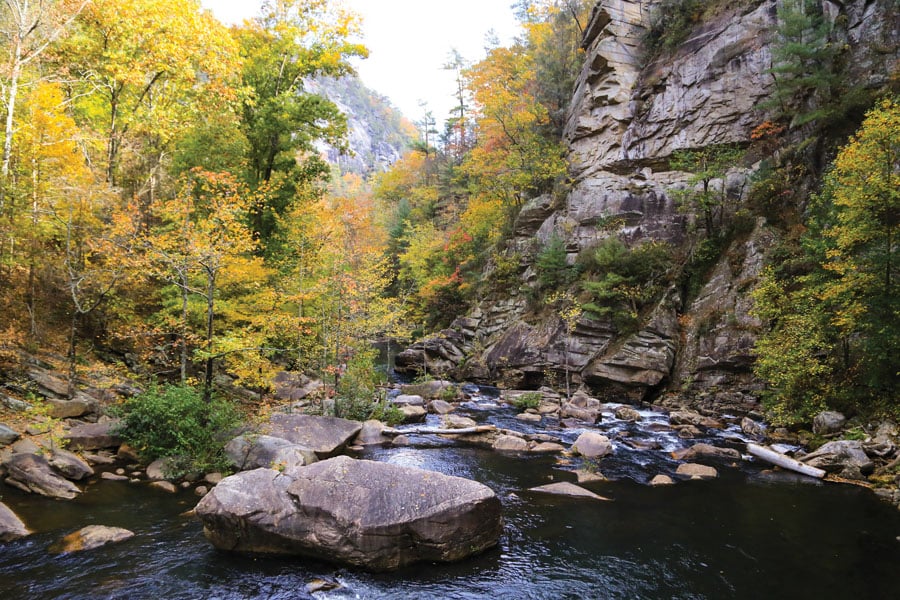
That, says Wander North Georgia founder Josh Brown, is what makes Clayton one of the Southeast’s best basecamps for recreation. Brown has been making weekend trips to Clayton for well over a decade. Finally, he decided to make the move full-time and has a brick-and-mortar shop on Main Street that sells locally and regionally made crafts.
“There is such an interesting dynamic in town,” says Brown. “I’d say about 99 percent of the population here go back five or six generations and have been living here for 200 years. There’s this huge foundation of history from those generations, but it’s not antagonistic. The locals don’t hate the tourists and the tourists don’t call the locals redneck hillbillies. Clayton blends both worlds really nicely. It’s one of those unique places where people come, they fall in love with it, and they come back over and over again. The visitors even start to feel like locals.”
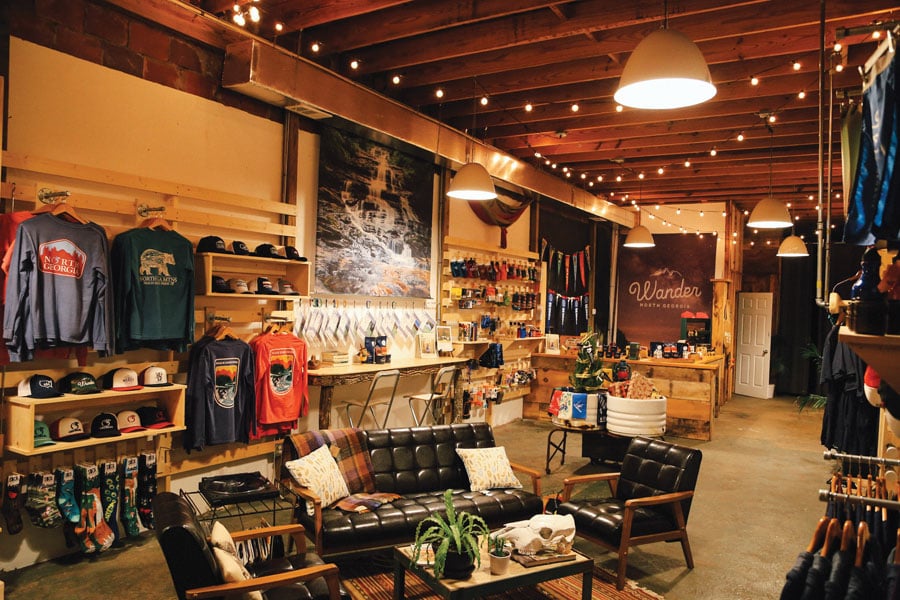
Play: Families with small children, or even passersby in need of a quick hike to stretch the legs, should be sure to make a stop at Hemlock Falls in Moccasin Creek State Park. At only two miles round-trip, this relatively flat trail leads to an impressively picturesque waterfall. Bring a rod and head upstream to try your hand at catching the creek’s resident native brook and rainbow trout population. Keep up the water-themed adventures by hiring a river outfitter to show you down the Chattooga River (for the best rapid-packed action, hit up section IV). Southeastern Expeditions will make the most of your seven-hour trip for $105 during the week, $129 on the weekend, lunch included. Another classic Southeastern whitewater gem, the Tallulah Gorge, flows nearby, and while the paddling on this river is much more advanced, the 20+ miles of hiking trails through the state park will let you get a taste of the action. At day’s end, head up to Black Rock Mountain State Park, Georgia’s highest state park. The park’s signature bluffs are visible from downtown Clayton. When the summer afternoon thunderstorms hit, head to Wander North Georgia, a hip place to shop, hang, and dig for off-the-beaten-path trail recommendations. There’s an indoor bocce ball court in the back of the store, complete with astroturf, darts, corn hole, and a big screen tele. What’s not to love about that?
Stay: Pitch a tent at Black Rock Mountain State Park for $32 per night. This is the closest camping to downtown Clayton and will keep you at the heart of the action. Some more luxurious accommodations can be found on Airbnb—for $135 per night you can rent a totally renovated 1880’s cabin in the Wolffork Valley of Rabun Gap, or, for about $100 more, you can stay in the complete opposite, a new-age “Tree House” located in the Mountain House [modern] compound designed by Mack Scogin Merrill Elam Architects. The White Birch Inn in downtown Clayton also has six cabin-style rooms starting at $165 per night.
Eat: Clayton’s small-town vibe certainly has a big-city feel to its eating options. Get your caffeine fix for the day at White Birch Provisions, where you can also resupply your bread, wine, cigar, and pastry needs (I mean, you are on vacation, right?). Breakfast is at Sunday Dinner, a downhome family-run joint that will make you feel like family, even if it’s your first time visiting. Fortify and its sister restaurant Fortify Pi are dishing out some top-of-the-line food that is locally sourced and exquisitely crafted. If it’s a nice day out, Universal Joint is the place to be. With a large outdoor patio, live Friday and Saturday night music, and some 15 beers on tap, it’s no wonder that this place has been a hit among locals and tourists alike. Got a game you can’t miss? Head over to Clarks’ On Main, a sports-bar-done-right with 35 beers on tap, 25 TV screens, and a Cheers vibe that’ll have you coming back time and again.
Spruce Pine, North Carolina
Population: 2,123
In the early 1900s, Spruce Pine was considered the Toe River Valley’s biggest town, thanks in large part to the vastly expanding railroad and mining industries of the time. Both of those industries have since dwindled to naught, and that’s left Spruce Pine’s residents the opportunity to reinvent their identity. At the heart of this next chapter is the great outdoors.
Located amid thousands of acres of western North Carolina’s most treasured public lands, Spruce Pine is the closest major town to three of the region’s iconic mountains—Mount Mitchell, Roan Mountain, and Grandfather Mountain. Its proximity to these Southeastern gems, coupled with in-town river access, has the potential to make Spruce Pine North Carolina’s next best mountain town. At least, that’s what Spruce Pine native Starli McDowell, Executive Director of the Toe River Valley Watch, thinks.
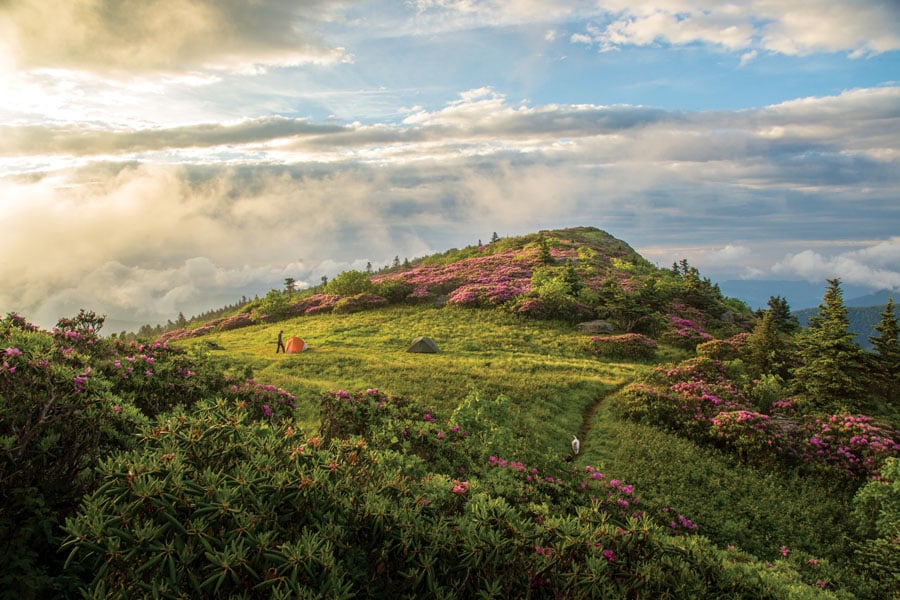
“Spruce Pine is all about that hometown, small, country feel with friendly people,” says McDowell. “We’re right at the center of all of these mountains, and the water that flows off of those mountains feeds the rivers and streams. We’re blessed with abundant clean water and good mountain people.”
McDowell was instrumental in the 2009 removal of the Spruce Pine dam on the Toe River, which opened access for paddlers through downtown Spruce Pine. Now, the river is free-flowing, and one of the few free-flowing rivers in the state. She’s currently working on a three-phase greenway that will increase pedestrian and bicycle accessibility to Spruce Pine. When complete in 2018, the greenway will connect downtown Spruce Pine to the Blue Ridge Parkway and will be recognized as an official section of the Overmountain Victory National Historic Trail which honors the Revolutionary soldiers who fought the British at King’s Mountain.
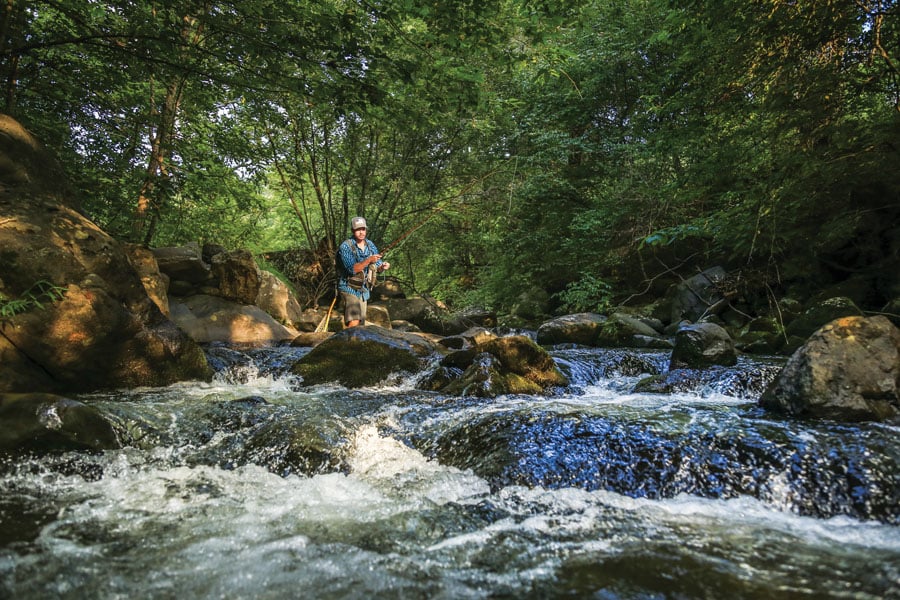
Play: Float the Toe River. Thanks to the hard work of McDowell and the Toe River Valley Watch, there’s an extremely in-depth online resource for paddling the Toe River Canoe Trail. Check out toerivervalley.org for more information on put-ins, camping, water levels, and more. Though mostly flat, the river does have some really fun class II+ rapids and flows for 20 miles unimpeded to the mouth of the Nolichucky Gorge, another classic river in the Southeast. Take advantage of Spruce Pine’s backdoor access to some of the most rugged terrain in the Southeast by hitting the trails on Roan Mountain. Appalachian Trail thru hikers treasure Roan for its miles of open, canopy-free trail that traverse a stunning grassy bald. Bring a camera if you go—hiking amid a 360-degree theater of endless blue ridgelines lends itself to countless photo opps. If you’re visiting during apple season, head up on the Blue Ridge Parkway to the Historic Orchard at Altapass. The you-pick orchard features walking trails and over 40 different heirloom apple varieties, making it a perfect blend of history and recreation. At day’s end, Spruce Pine’s Riverside Park offers a mellow, paved, half-mile-long trail that parallels the Toe River. Keep an eye out for the river’s winged residents like the spotted and solitary sandpipers, great blue herons, and belted kingfishers.
Stay: For quiet camping that puts you front and center to all of the adventure and scenery that defines the Blue Ridge Parkway, look no further than Springmaid Mountain. Tent sites start at $25 per night and come complete with a picnic table and fire ring with grill. If you’re in the market for a lodging option with a roof, Springmaid also has a handful of one- to five-bedroom cabins for rent starting at $85 per night. Campers can enjoy kayaking, fishing, or even horseback riding right on-site, too.
Eat: No visit to Spruce Pine is complete without breakfast at the town’s two favorite breakfast spots, DT’s Blue Ridge Java and Fox and the Fig. For the full breakfast menu, head to DT’s. If it’s a quick coffee and maybe a cup of yogurt and homemade granola, try the Fox and the Fig. Later in the day, hit up Chef Nate Allen’s Knife & Fork for craft cocktails and a sophisticated, seasonally inspired meal. We can’t recommend anything here, because the menu changes almost daily, but we’ve heard the apple brandy beef is divine. The Tropical Grill is a much more casual dining option but a tried and true local go-to.
